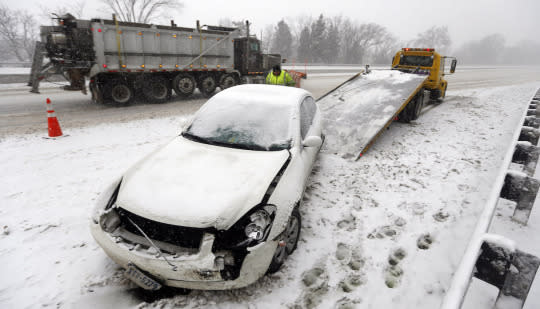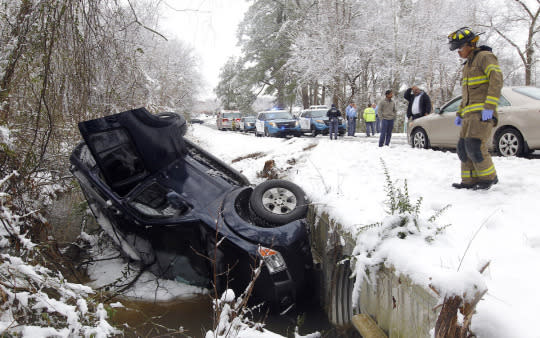Get A Grip: Colder States Should Mandate Winter Tire Use

I know this isn’t a popular statement, but it’s true: Winter tires are better, safer, and, quite frankly, should be required by law in states with severe winters.
Several countries already require winter rubber on vehicles. Look to Canada where some regions mandate all cars on the road have winter tires. Canadians, for the most part, think this makes sense. In Germany, cars are required to have at least “mud+snow” rated tires from roughly October to Easter, with fines to enforce it—and if you’re in a winter accident without them, insurance likely won’t cover the damage.
Even in America, certain road conditions dictate when vehicles are allowed to travel on them and, technically, anyone can get a ticket for driving a car with unsafe or overly worn tires.
So why not admit the truth? Winter tires are safer in the cold.
The science behind winter tires starts with the compound used to make the tires. All season radials use a rubber that attempts to provide a sound footing in both the extremes of hot and cold. But as the temperature drops, the all season radials become harder and provide less grip. Winter tires use a compound that remains pliable in cold weather (which is why you should avoid driving with them when the temperature is above 45 degrees). They allow cars to stop easier and faster over less distance.
In addition to the compound chemistry, tire engineers told me, the tires have different tread designs to help push snow and slush out of the tire. Many winter tires are also more narrow than regular tires because that helps it cut through snow and put more rubber on the road.
Tests again and again have proven winter tire effectiveness in the cold, but few people appear to listen.
Recently, I traveled up to Maine and did some back-to-back testing of BFGoodrich tires winter tests. We took two Toyota RAV4s and drove one with BFGoodrich Winter Slalom KSI winter tires and one with BFGoodrich Advantage all season radials.
We then headed down a road going 25 mph until we hit a slick patch, where we slammed on the brakes until we came to a full stop. The difference was dramatic. The Advantage tires stopped the RAV4 in 107 feet. The Winter Slalom KSI tires stopped the RAV4 in 71 feet. That’s the difference between stopping at the traffic light or in the middle of the intersection.
Winter tires also allow vehicles to accelerate faster and maintain better steering on the road. On the snowy mountain in Maine, the RAV4 with winter tires felt much more stable on the road than the one without. The RAV4’s steering was sharper and more responsive. Its acceleration did, indeed, feel quicker. And here’s where we note again that all-wheel-drive or four-wheel-drive only improves traction in snow and ice while accelerating. Those systems have no benefit when you’re trying to slow down or stop on a slick surface.

The cost may be less than you imagine. The BF Goodrich winter tires sell for less than $90 each, which might cost consumers $100 a wheel, including changing the tires. For many people, $400 is less than their deductible.
More importantly, driving with winter tires is more important than having an all-wheel drive system. It’s also cheaper.
Yes, there’s the question of storing the tires when not in use. Not everyone has a garage to keep them, and they can be a pain to move around. But there are potential easy solutions. Dealerships or tire shops could easily store them for customers, and create a reason for customers to visit twice a year to have the tires changed and the vehicle looked over—which is how they do it in Germany.
But even if people have to go home with their other tires, if it is important, people will find some place to store them.
Of course, winter tires would not help many people during last week’s blizzard. No tire can help someone with trying to get through two feet of snow. Nothing can. The best thing to do is stay off of the road.
Choosing not to put winter tires on your car affects more than just the driver—it’s a choice that can have fatal consequences for you, and whomever your sliding vehicle strikes.
Photos by Associate Press

 Yahoo Autos
Yahoo Autos 